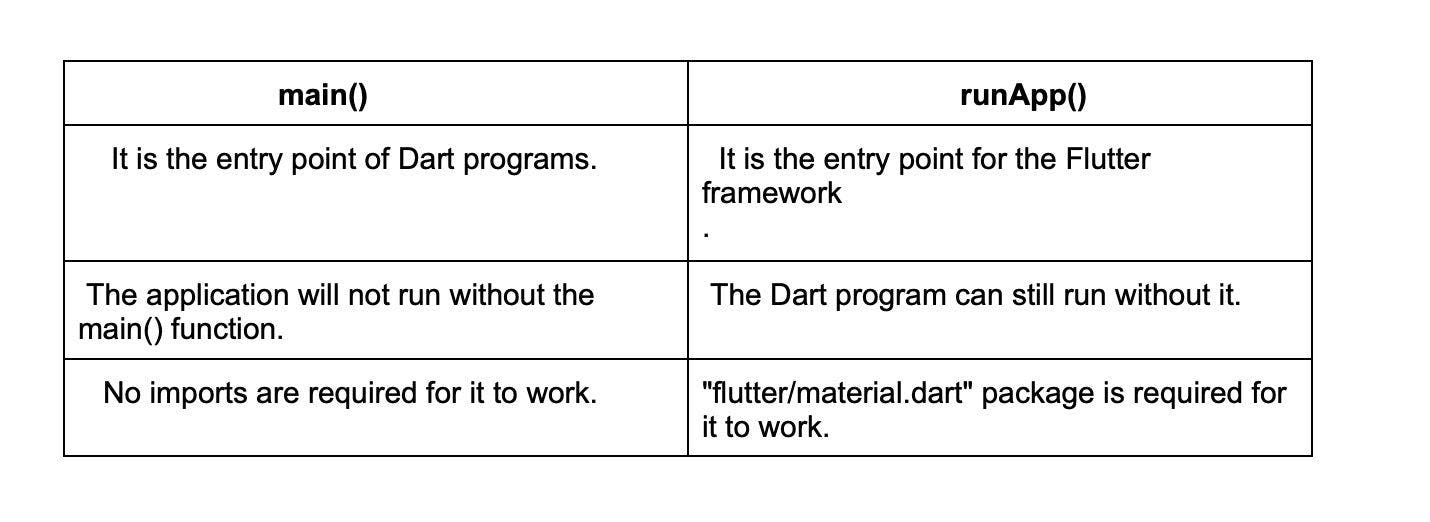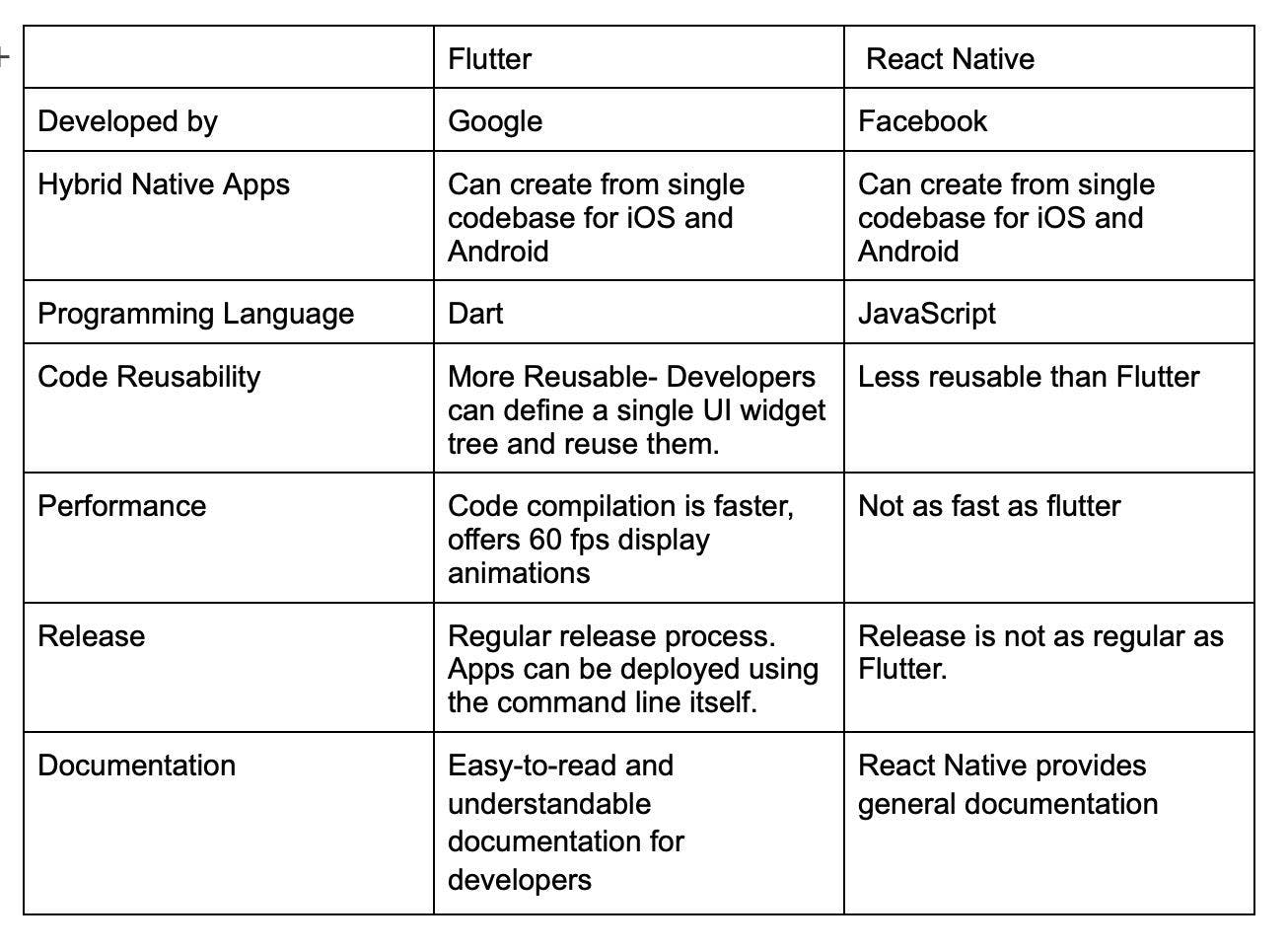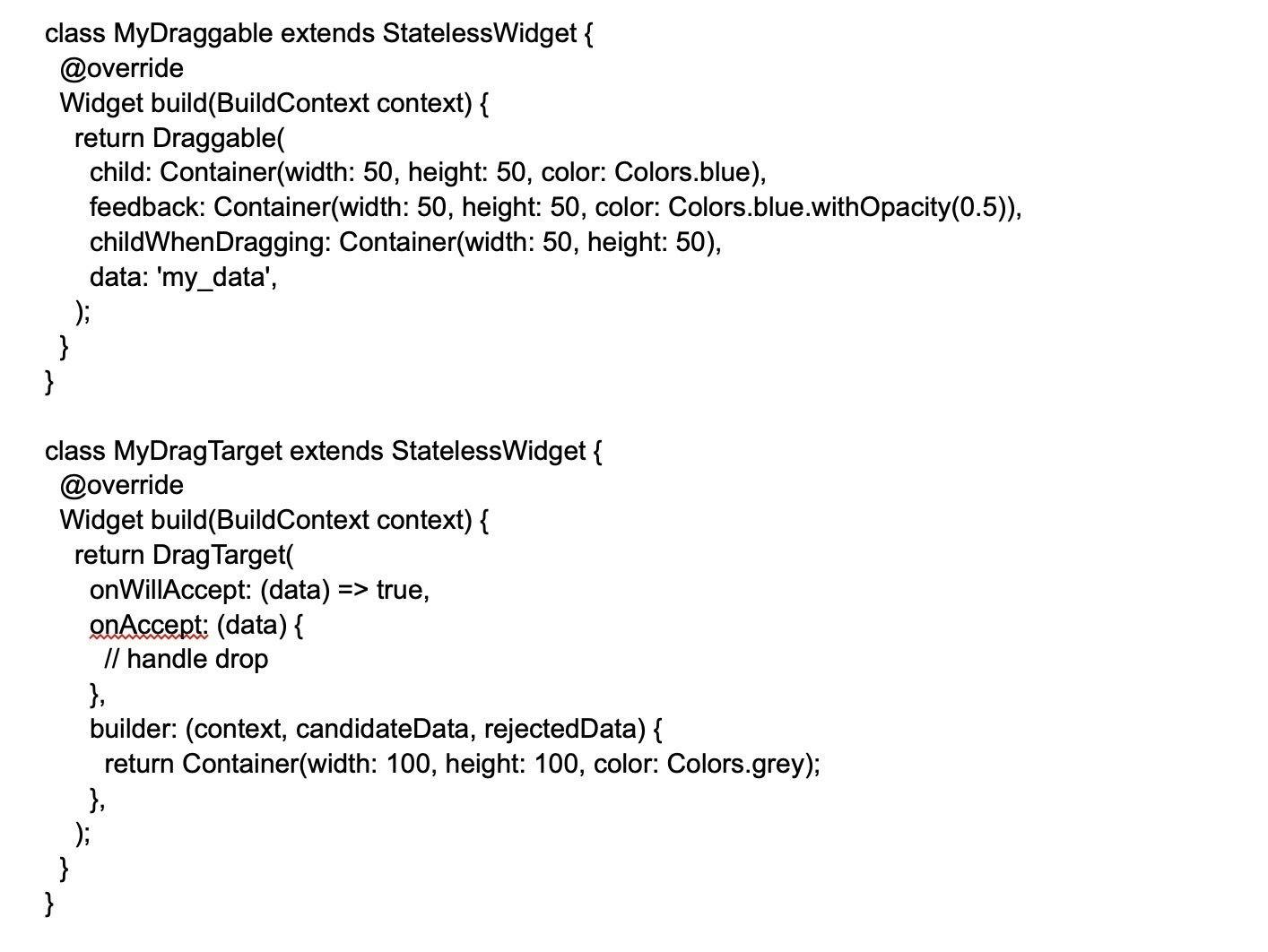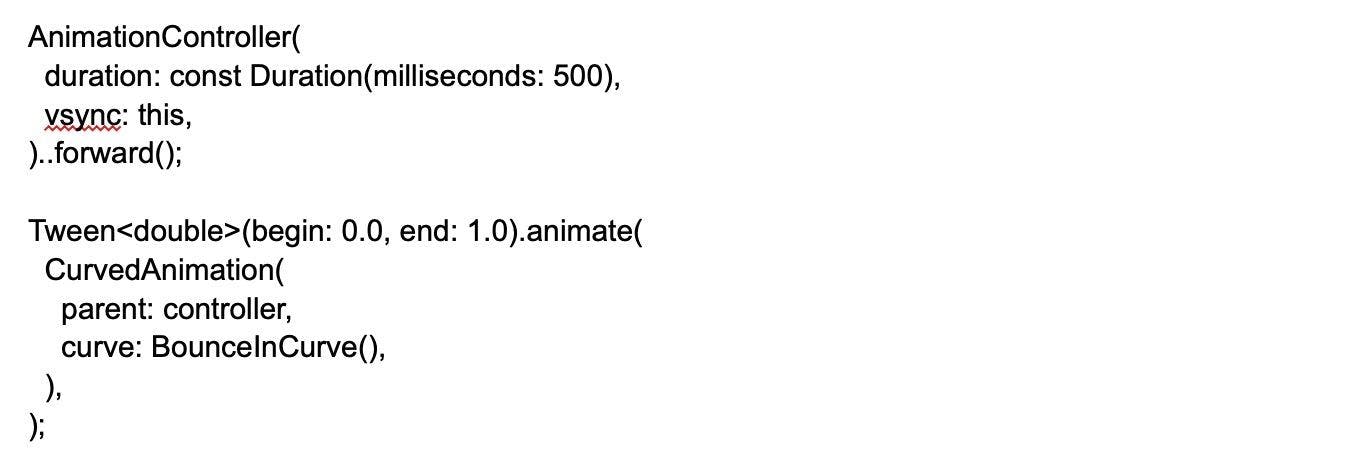
Flutter
Basic Interview Q&A
1. Why is Flutter preferred over other mobile app developing tools?
Flutter is a free and open-source mobile UI framework, introduced by Google in May 2017. Flutter enables you to develop a native mobile app using only one codebase. This implies you may design two separate apps using the same programming language and codebase (for iOS and Android).
Flutter is preferred over other mobile app development tools like Java and React Native due to a myriad of reasons. A few of them are:
- Flutter supports cross-platform development
- Programming in Flutter is extremely easy and flexible
- The building process in Flutter is much faster than that in all its competitors
2. What are packages and plugins in Flutter?
A package is a set of classes, interfaces, and sub-packages that allow users to create modular code that can be shared easily. Instead of starting from scratch, using packages can help construct applications fast. In Flutter, you may use a package to add new widgets or functionality to an app.
On the other hand, a plugin is a piece of software that enhances your app's functionality. Plugins play a crucial role in the Flutter ecosystem.
3. What are the limitations of Flutter?
Since Flutter is still a relatively new tool, it has some limitations. They are as follows:
- The number of third-party libraries is very small
- The release size of Flutter is larger than expected
- Flutter requires to be used along with another OOP language, Dart which cannot compete with other OOP languages such as Java, C#
- Due to Flutter’s limited complexity, mobile ad platforms do not support it
- Flutter is still not used by a wide audience
4. Why does it generally take a long time to develop a Flutter app?
Because Flutter generates a device-specific IPA or APK file, building a Flutter application takes substantially longer the first time. This method, which normally takes a long time, uses Xcode and Gradle to build a file.
5. What are keys and how do you use them?
A set of IDs for Widgets, Elements and SemanticsNodes make up the key class. Keys are responsible for preserving the state of widgets when they are updated inside the widget tree. Keys may also be used to modify and rearrange collections of widgets of the same type and defined states.
Otherwise, keys may be superfluous to the code, even if they aren't harmful in any manner. Keys are useful when you need to edit a widget tree with stateful widgets, but not when the tree is entirely made up of stateless widgets.
6. What are the different types of streams in Dart?
Streams provide an asynchronous sequence of data. Asynchronous programming uses the idea of streams. They refer to a program's asynchronous succession of data occurrences. We put a value on one end and a listener on the other, similar to a pipe. Several listeners can be combined into a single stream, and when they are placed in the pipeline, they will all get the same data. It is possible to utilize the SteamController to establish new streams or manage existing ones. There are two types of streams:
- Single Subscription Streams
These streams convey events in chronological order. They're thought of as individual sequences inside a greater totality. When the sequence in which events are received matters, such as when reading a file, these streams are employed. Throughout the sequence, there can only be one listener, and the event will not be triggered if there isn't one. - Broadcast Streams
These broadcasts provide subscribers with information about upcoming events. Subscribers can instantly begin listening to events after subscribing to them. These are flexible streams that allow several listeners to listen at the same time. Furthermore, even after canceling a previous membership, one may listen again.
7. What is pubspec.yaml file?
While creating a Flutter project, a particular type of file is always included at the top of the project. This file is known as the pubspec.yaml file, also called ‘pubspec’. This file contains information about a project's dependencies, such as packages and their versions, typefaces, and so on. It ensures that the package version is the same the next time you create the project. You can also place restrictions on the app. This project's configuration file will be used a lot while working with the Flutter project. This specification is written in YAML, a human-readable markup language.
8. What is Flutter?
Flutter is an open source software development kit (SDK) UI used for cross-platform applications from a single codebase. Flutter is primarily used for creating natively compiled, multi-platform applications across iOS and Android seamlessly.
9. Flutter is developed by which company?
10. What was the first version of Flutter which ran on an Android operating system?
Sky is the first version of Flutter which ran on Android OS. It was announced at the 2015 Dart developer summit with the stated goal of being able to render consistently at 120 frames per second.
11. Can you tell us the four main elements of Flutter?
The four main elements of Flutter are:
- Flutter engine
- Widgets
- Design-specific widgets
- Foundation Library
12. When was the first version of Flutter released?
The first version of Flutter was released in May 2017, but it was first announced in 2015. In December 2018, Google released Flutter 1.0. In December 2019, Flutter 1.12 was released.
13. Flutter is written in which language?
Flutter was written in the Dart language. While writing and debugging an application, Flutter runs in the Dart virtual machine, which features a just-in-time execution engine.
14. What does the acronym SDK stand for?
Software Development Kit is a set of software tools and programs provided by software and hardware vendors that developers can use to develop applications for specific platforms. An SDK helps developers easily integrate their apps with a vendor's services. SDKs can include APIs (Application Programming Interfaces), sample code, documentation, and other resources that help developers create software applications.
15. Can you name some best editors for Flutter development?
Some popular IDEs (Integrated Development Environment) for Flutter include the following:
- Android Studio
- IntelliJ Idea
- Emac
- Visual Studio
- Codemagic
16. Which operator is used to evaluate and return values between two expressions?
This “??” operator is used to evaluate and return values between two expressions. This operator first checks the expression 1 and, if it is non-null, returns its value; otherwise, it will evaluate and return the value of expression 2.
17. Can you tell us how many kinds of widgets there are in Flutter?
There are two main types of widgets in Flutter. These include:
StatelessWidget- It does not have any state information. It is static throughout its lifecycle. Examples are Row, Text, Column, and Container.
StatefulWidget- It has state information. It contains two classes: the state object and the Widget. It is dynamic because it can change the inner data during the Widget's lifetime. Examples are Radio, Form, Checkbox, and TextField.
18. Can you name the command used to compile the release mode?
This command “Flutter run -- release” is used to compile the release mode. Release mode for a web app means that the app is compiled with the dart2js compiler for best performance.
19. Name the different types of build modes in Flutter.
There are three types of build modes in Flutter. These include:
Debug- It is used to test the apps. On Android Studio, you can find a green play button on the top panel.
“Flutter run”
Profile- In this mode, some debugging ability is maintained - enough to profile your app's performance, and also, it has the performance as the release mode.
“Flutter run -- profile”
Release- It is used for deploying the app on marketplaces.
“Flutter run - - release”
20. Which widget in Flutter is a box that comes with a different size?
SizedBox is a widget in Flutter that allows us to specify an arbitrary size for a widget. It is basically used to add empty space between widgets. SizedBox also supports specifying a specific aspect ratio for its child.
21. Suppose you have to represent real world behavior in Flutter, which animation would you use?
The choice of animation in Flutter would depend on the specific behavior that needs to be represented. Flutter provides several animation options that can be used to represent real-world behavior. These include Physics-based animation, Tween animation, Curved animation, and Hero animation.
22. Name some popular apps that use Flutter.
Some of the most popular apps that employ Flutter include:
- Google Ads
- Hamilton
- KlasterMe
- Reflectly
23. Which folder is used to write Android apps in Flutter?
Android Folder is used to write Android apps in Flutter. The Android Folder contains files and folders required for running the application, and these files are autogenerated during the creation of a Flutter project.
24. What is the use of the Await function?
The Await function is an asynchronous function. Its job is to wait until it gets the final value. Await is used with async functions and that run asynchronously, giving users the choice to wait for the asynchronous mode to finish before continuing.
25. Can you tell us which function compiles and updates the app?
In Flutter, there are several functions and commands that can be used to compile and update the app. However, the most commonly used function for this purpose is hot reload.
hot reload is a development feature in Flutter that allows you to update your app's code in real-time, without restarting the entire app.
26. Can you tell which function is accountable for starting the program?
main () function is used to start a program. This function is highly critical as, without it, one cannot write any function.
27. What is the purpose of animation controller class in Flutter?
The Animation Controller class in Flutter is used to control and manage animations. It provides a way to start, stop, or pause an animation, and allows you to define the duration, speed, and direction of an animation.
The primary purpose of the Animation Controller class is to define an animation that can be used in your app's user interface. The class provides methods for defining and manipulating animations, such as setting the duration and the curve used to control the animation's progress.
28. How can you test a single Widget?
Using the Widget tests technique, you can make sure that various portions of the user interface work as intended without the need for a physical device or simulator. This technique is the best way to isolate small parts of your app and find out whether your code is behaving as expected
29. Can you use WidgetsApp for basic navigation?
Yes, a material app widget builds a navigator, which manages a stack of widgets identified by strings, also known as routes objects and gives you two ways for managing the stack.
30. Which widget allows us to refresh the screen?
RefreshIndicator Widget enables us to refresh the screen. When the user pulls down on the widget, the onRefresh callback is triggered, which typically involves fetching new data from a server or updating the UI in some way.
31. Can you state a few examples of stateless widget?
Some examples of a stateless widget include the following:
Text - This displays a string of text with a single style.
Container: This widget can contain other widgets and provide padding, margins, and other layout properties.
Icon - This is used for the list of available material icons that can be used with this class.
32. Explain the term “Tree shaking” in Flutter.
Tree shaking is a method of removing the unused module in the bundle during the development process. Tree shaking serves as a sort of optimization technique that optimizes the code by removing the dead code.
While importing or exporting codes, there might be dead codes hanging around. Removing these dead codes reduces the code size which in turn improves the performance of the application.
33. What is used to import packages for your project?
pubspec.yaml file is used to import packages in the Dart code. It allows us to set the constraints for the application. This file contains project dependencies, general project settings, and project assets.
34. What’s the use of Navigation.push in Flutter?
The role of Navigation.push in Flutter is to add a route to a bundle of other routes which are managed by the navigator.
35. Why HTTP package is used in Flutter?
HTTP package is used in Flutter for making HTTP requests to web servers. It allows Flutter developers to send HTTP requests and receive HTTP responses from APIs or web servers. Flutter apps need to communicate with APIs or web servers to fetch data or send data to the server. The HTTP package provides a convenient and easy-to-use way to make HTTP requests in Flutter.
36. Explain profile mode in Flutter?
The profile mode in Flutter is used to test the functionality of an app while launching it. It compiles and launches your app almost identically to release mode but with additional functionality to allow debugging performance problems.
37. What's the role of BuildContext in Flutter?
In Flutter, the BuildContext is an object that provides access to the location of a widget in the widget tree hierarchy and to various services such as Theme, MediaQuery, and Navigator. The BuildContext is used by widgets to access the properties of their parent widget, such as its size, position, and theme. It is is also used to navigate between screens using the Navigator widget.
38. Can you tell us which class is responsible for implementing the basic material design visual layout structure for an app in Flutter?
The scaffold class is a widget in Flutter that is used to implement the basic material design visual layout structure. The scaffold class makes it faster to create a general-purpose mobile application. Moreover, it contains almost everything we need to create a functional and responsive Flutter application
39. Can you tell us what will be the default return type, if you don’t specify the return type for a function?
In Flutter, Dart is the programming language used to develop the framework. In Dart, if you don't specify the return type for a function, the default return type will be dynamic. This means, if you declare a function in Flutter without specifying a return type, Dart assumes that the function can return any type of value and assigns the dynamic type to the return value by default.
40. What’s the name of a constructor for a class in Flutter?
The name of a constructor for a class is the same as that of the class itself. Constructor is a special strategy that is used to create objects with predetermined values for the properties. There are three types of constructors in Flutter: named constructor, standard constructor, and factory constructor.
41. What’s the core of the Flutter layout mechanism?
The main core of the Flutter layout mechanism is the Widgets. The widgets are the building blocks of the user interface, and they are arranged in a tree-like structure known as the widget tree. The image, text, icon, and even the layout of your application are all widgets.
42. Which widget can be used to display one after another in scroll format?
The ListView Widget is used to display a large number of items as a scrollable list. ListView is an advanced version of the Column widget that automatically provides scrolling when the list of items won’t fit on the screen.
43. What is a layout in Flutter?
A layout in Flutter refers to how widgets are arranged on the screen. The layout is determined by the constraints passed down from the parent widget, and it determines the position and size of the child widget.
44. Can you tell us how we can test a single widget in Flutter?
Widget tests allow building and interacting with widgets in a test environment. It is used to check whether the Widget works as expected or not. Hence, using this testing UI component, you can test a single widget.
45. What’s the latest version of Flutter?
3.7 is the latest version of Flutter. Along with an improved framework, this new version also has great new features like enhanced material 3 support, cascading menus and menu bars,impeller preview, custom context menus, and DevTools updates among others .
46. Is Flutter a front-end framework or back-end?
Flutter is primarily a front-end framework. It provides tools and widgets to build beautiful and engaging user interfaces, and it supports various platforms such as iOS, Android, and the web. However, the framework does provide some back-end functionalities. Flutter applications can communicate with web APIs or connect to backend services through third-party packages or plugins.
47. What’s the function of the future in Dart?
A future function is used to predict a potential error or value that may occur in the future. It can be completed with a value or an error. Here, developers can plug call backs for each case. Some programming languages use “promise” for the same function.
48. What’s the role of image.network() constructor in Flutter?
The Image.network() constructor is a widget in Flutter that allows you to display images from the network in your application. It is used to load and display images from a URL.
Example:
Image.network('https://piccol.photos/259?image=8’,')
49. Can you tell us what you know about Rune In Dart?
In dart programming language strings are a sequence of UTF-16 which is a 16 bit unicode Transformation Format. Rune refers to an integer that is used to describe any Unicode code point.
50. Is Flutter free?
Yes. It is a free and open source mobile UI framework created by Google. Here, with only one codebase, you can create native mobile applications.
51. Why do we use const keyword in Flutter?
We use the keyword to declare constants. Basically, when we know the value of a variable at compile time. This means the compiler knows in advance what value to store .
52. What are some operators commonly used in Dart?
Here are some of the operators that are commonly used to build apps in Dart:
= (assignment operator): Used to assign a value to a variable.
?? (null-aware operator): Used to check whether a variable is null or not and provide a default value if it is null.
! (bang operator): Used to assert that an expression is not null.
. (dot operator): Used to access properties and methods of an object.
53. Why do we use a ticker in Flutter?
Tickers are used in Flutter as they provide a secure way of updating the UI at 60 frames per second. It is a class that listens to the frameCallback and calls a tick function that forwards the elapsed duration between the current frame and last frame to the ticker listener.
54. How can you reduce execution time for running code?
It will depend on the size and adaptability of the app packages. According to which we can integrate just-in-time compilers to run code which will enhance the app's performance. Dart code execution is faster than many other languages where Ahead-of-time compilers also shorten execution times. And, for merging sequential streams, integrating these compilers helps in run-time reduction and functionality increase in a variety of applications.
55. What is Dart?
Dart is a general-purpose, object-oriented programming language that was initially developed by Google in 2011. It is designed to be fast, efficient, and scalable, making it ideal for building a wide range of applications, including web and mobile apps, server-side applications, and command-line tools.
56. What process will you use to reduce widget rebuild?
On rebuilding, the state of the widget changes. This, however, helps the user to see the UI reflect state changes. At this point recreating sections of the user interface that do not need to be changed is unnecessary.
To avoid the needless rebuilding of the widgets one can divide the widget tree into small individual widgets each having its own build process. Here const constructor can be used to inform Flutter that the dont need to be rebuilt.
57. Define spacer widget?
In Flutter, the Spacer widget is a flexible widget that takes up available space within a Row, Column, or Flex layout. It is commonly used to create vertical or horizontal space between other widgets, or to distribute available space between multiple widgets.
Wrapping up
Through this list, we’ve curated some of the most commonly-asked Flutter interview questions that can help developers ace the interview and assist hiring managers in understanding which candidates are fluent in Flutter.
We have divided this list of Flutter interview questions and answers into basic, intermediate, and advanced levels. Hence, both candidates and managers can get a thorough overview of what type of questions are asked at every level. However, if you wish to skip this process and hire a Flutter developer quickly, you can choose Turing for deeply-vetted high-quality developers. If you’re a skilled developer looking for well-paying jobs, you can also check our Flutter developer jobs and apply to work for a top U.S. company in no time.
Hire Silicon Valley-caliber Flutter developers at half the cost
Turing helps companies match with top quality remote JavaScript developers from across the world in a matter of days. Scale your engineering team with pre-vetted JavaScript developers at the push of a buttton.
Tired of interviewing candidates to find the best developers?
Hire top vetted developers within 4 days.
Leading enterprises, startups, and more have trusted Turing

Check out more interview questions
Hire remote developers
Tell us the skills you need and we'll find the best developer for you in days, not weeks.












